|
|
|
Sort Order |
|
|
|
Items / Page
|
|
|
|
|
|
|
| Srl | Item |
| 1 |
ID:
128862
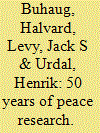

|
|
|
|
|
| Publication |
2014.
|
| Summary/Abstract |
Established in 1964, the Journal of Peace Research (JPR) celebrates 50 years. This anniversary special issue of the journal offers broad reviews of research areas that have been central both to the journal and to the field of peace and conflict research generally. An opening article co-authored by long-time editor Nils Petter Gleditsch offers a historical view on peace research and tracks trends in the use of 'peace' and 'violence' in titles of JPR across the first 49 volumes of the journal. Opening the review article section, two contributions address key thematic areas for the journal. Few if any subjects have attracted more attention in the study of international relations during the second half of JPR's first 50 years than the democratic peace, and in the extension of this subject, the broader debate about the liberal peace. Additional articles review the status and propose future developments in the study of war and its relationship with territory, ethnicity, ideology and natural resources. Another key historical topic associated with the journal concerns the economic cost of military conflict, while more recent research fields covered include terrorism and human rights, topics that have grown to become major JPR niches. Reflecting the methodological contributions by JPR, two articles focus on challenges of contemporary quantitative political analysis and progress in peace and conflict data collection. Finally, this special issue includes a review of research on international mediation in armed conflicts.
|
|
|
|
|
|
|
|
|
|
|
|
|
|
|
|
| 2 |
ID:
125113
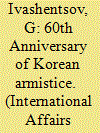

|
|
|
|
|
| Publication |
2013.
|
| Summary/Abstract |
ON JULY 27, 2013, it will be 60 years since the Armistice Agreement was signed in the village of Panmunjom, putting an end to the three-year Korean War. That war, which has become the bloodiest and most devastating military conflict since the end of World War II, remains an unhealed wound for the Koreans while its consequences are still making an impact on the international situation in Northeast Asia and beyond.
|
|
|
|
|
|
|
|
|
|
|
|
|
|
|
|
| 3 |
ID:
033062
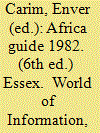

|
|
|
|
|
| Edition |
6th ed.
|
| Publication |
Essex, World of Information, 1981.
|
| Description |
407p.Hbk
|
| Standard Number |
0904439267
|
|
|
|
|
|
|
|
|
|
|
|
Copies: C:1/I:0,R:0,Q:0
Circulation
| Accession# | Call# | Current Location | Status | Policy | Location |
| 020514 | 909.9605/CAR 020514 | Main | On Shelf | General | |
|
|
|
|
| 4 |
ID:
073977


|
|
|
|
|
| Publication |
2006.
|
| Summary/Abstract |
We offer a theory explaining how alliances as international security regimes reduce military conflict between member-states through their internal provision of information concerning national military capabilities. Bargaining models of war have shown that a lack of information about relative military capabilities functions as an important cause of war. We argue that alliances provide such information to internal participants, and greater knowledge within the alliance about member-state military capabilities reduces certain informational problems that could potentially lead to war. This internal information effect, however, is a conditional one. We posit that the information provided within the alliance matters most for dyads at or near power parity: the cases where states are most uncertain about who would prevail if a military conflict did emerge. In power preponderant dyads where the outcome of a potential military conflict is relatively certain, the internal information provided by military alliances becomes less important. Our statistical results provide strong support for these theoretical arguments.
|
|
|
|
|
|
|
|
|
|
|
|
|
|
|
|
| 5 |
ID:
134191
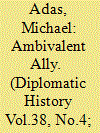

|
|
|
|
|
| Publication |
2014.
|
| Summary/Abstract |
The article focuses on the AEF, entry into WW1; its impact on the allies and revisionist histories of John Pershing's leadership and the outcome of the conflict.
|
|
|
|
|
|
|
|
|
|
|
|
|
|
|
|
| 6 |
ID:
100041
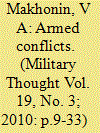

|
|
|
| 7 |
ID:
089348
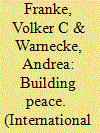

|
|
|
|
|
| Publication |
2009.
|
| Summary/Abstract |
After a brief introduction, this contribution comprises a tabular inventory of the 69 UN peace missions since the end of the Cold War. It highlights the structural features of each mission, the background to crisis and the mission's contributions to security, socio-economic well-being, governance, justice and reconciliation.
|
|
|
|
|
|
|
|
|
|
|
|
|
|
|
|
| 8 |
ID:
165461
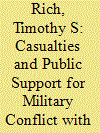

|
|
|
|
|
| Summary/Abstract |
What explains the American public’s support for military conflict with North Korea? Despite increased rhetoric, few analyses address American public opinion or whether priming the public to consider casualties influences their perceptions. The results of an experimental survey design suggest that mentioning the human cost—even without explicit references to American casualties—reduces support for American military action against North Korea but not broader perceptions of North Korea.
|
|
|
|
|
|
|
|
|
|
|
|
|
|
|
|
| 9 |
ID:
038861
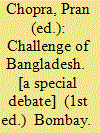

|
|
|
|
|
| Edition |
1st ed.
|
| Publication |
Bombay, Popular Prakashan, 1971.
|
| Description |
159p.hbk
|
|
|
|
|
|
|
|
|
|
|
|
Copies: C:1/I:0,R:0,Q:0
Circulation
| Accession# | Call# | Current Location | Status | Policy | Location |
| 006647 | 954.92/CHO 006647 | Main | On Shelf | General | |
|
|
|
|
| 10 |
ID:
032753
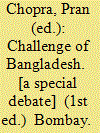

|
|
|
|
|
| Edition |
1st ed.
|
| Publication |
Bombay, Popular Prakashan, 1971.
|
| Description |
159p.hbk
|
|
|
|
|
|
|
|
|
|
|
|
Copies: C:1/I:0,R:0,Q:0
Circulation
| Accession# | Call# | Current Location | Status | Policy | Location |
| 006480 | 954.92/CHO 006480 | Main | On Shelf | General | |
|
|
|
|
| 11 |
ID:
065661
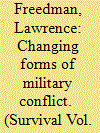

|
|
|
|
|
| Publication |
1998.
|
| Description |
p.39-56
|
|
|
|
|
|
|
|
|
|
|
|
|
|
|
|
| 12 |
ID:
123051
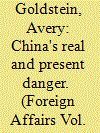

|
|
|
|
|
| Publication |
2013.
|
| Summary/Abstract |
Much of the debate about China's rise in recent years has focused on the potential dangers China could pose as an eventual peer competitor to the United States bent on challenging the existing international order. But another issue is far more pressing. For at least the next decade, while China remains relatively weak compared to the United States, there is a real danger that Beijing and Washington will find themselves in a crisis that could quickly escalate to military conflict. Unlike a long-term great-power strategic rivalry that might or might not develop down the road, the danger of a crisis involving the two nuclear-armed countries is a tangible, near-term concern -- and the events of the past few years suggest the risk might be increasing.
|
|
|
|
|
|
|
|
|
|
|
|
|
|
|
|
| 13 |
ID:
109309
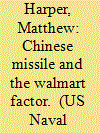

|
|
|
| 14 |
ID:
157635
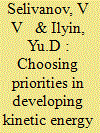

|
|
|
|
|
| Summary/Abstract |
The authors examine the military economic expediency of kinetic energy weapons development for performing combat missions in armed conflicts, local and regional wars, and a large-scale conventional war. Basic assumptions and premises for determining the place and role of various kinetic energy weapons are formulated, and qualitative assessment of their development priorities to ensure Russian defense capabilities is proposed.
|
|
|
|
|
|
|
|
|
|
|
|
|
|
|
|
| 15 |
ID:
119132
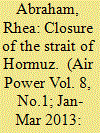

|
|
|
| 16 |
ID:
085053
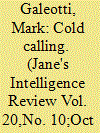

|
|
|
| 17 |
ID:
100989
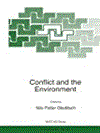

|
|
|
|
|
| Publication |
Dordrecht, Kluwer academic publishers, 1997.
|
| Description |
vii, 598p.
|
| Contents |
B
|
| Standard Number |
0792347684
|
|
|
|
|
|
|
|
|
|
|
|
Copies: C:1/I:0,R:0,Q:0
Circulation
| Accession# | Call# | Current Location | Status | Policy | Location |
| 055568 | 363.7/GLE 055568 | Main | On Shelf | General | |
|
|
|
|
| 18 |
ID:
069871
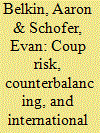

|
|
|
|
|
| Publication |
2005.
|
| Summary/Abstract |
Contrary to the literature on rallies-around-the-flag, this article argues that, in some circumstances, leaders may use international conflict to promote domestic divisiveness. More specifically, the threat of a military coup generally prompts leaders to divide their militaries (a practice known as counterbalancing), and even to engage in international conflict to ensure that various branches of their own armed forces remain distrustful of one another. Two empirical tests of these claims are offered: a large-N statistical analysis that examines whether coup risk leads to counterbalancing, and whether counterbalanced nations engage in more low-level military conflict (controlling for other causes of conflict); and a case study of Georgia shortly after the dissolution of the Soviet Union. Both empirical studies support the arguments advanced by the authors.
|
|
|
|
|
|
|
|
|
|
|
|
|
|
|
|
| 19 |
ID:
186970
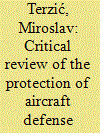

|
|
|
|
|
| Summary/Abstract |
The conflict between the armed forces of the Republic of Azerbaijan and the armed forces of Nagorno Karabakh in the Nagorno Karabakh region analyzed in this paper covers the period from 26 September 2020 to 11 October 2020. The Armed Forces of the Republic of Azerbaijan conducted an offensive operation with the maximum use of unmanned aerial vehicle (UAV) in order to achieve success in the initial phase of the operation by targeting land forces in prepared defensive positions, air-defence systems, and command posts. Effects of the actions of UAV shown on footage published by Azerbaijan Armed forces indicate that the Nagorno Karabakh armed forces failed to anticipate and to provide protection of the land forces against mass use of UAV, primarily the air defense systems. This paper analyzes the physical and military dimension of the conflict with focus on the shortcomings in the protection of the air defense systems from mass use of UAV. Based on the analysis, the paper presents recommendations for improving the protection of the air defense systems against UAV on tactical level.
|
|
|
|
|
|
|
|
|
|
|
|
|
|
|
|
| 20 |
ID:
189270
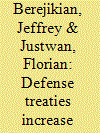

|
|
|
|
|
| Summary/Abstract |
Do security guarantees affect people's willingness to spend their country's “blood and treasure” in a military crisis? Recent research finds that international legal commitments reshape domestic policy preferences. However, the focus of that scholarship is traditionally on issues such as human rights that define a society's normative obligations. In this study, we deploy two original survey experiments in the United States describing a potential military crisis on the Korean peninsula. We find that increasing the salience of the 1953 agreement between Washington and Seoul increases support for military action and that individuals become both more tolerant of U.S. military deaths and North Korean civilian casualties. In addition, the breadth of these effects increases when individuals are provided more detail about the agreement. These results extend the analysis of international law and domestic preferences into the domain of national security politics.
|
|
|
|
|
|
|
|
|
|
|
|
|
|
|
|
|
|
|
|
|